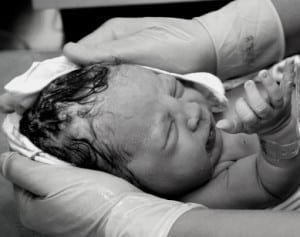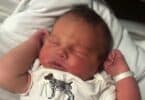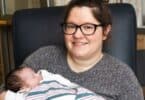
Researcher Marian F. MacDorman, a statistician at the National Center for Health Statistics in Hyattsville, Md. says that the rise in home births though is steep.
“This is a fairly rapid increase over five years and it is fairly widespread, with increases in almost all states,” she says. “It seems like the beginning of a trend.”
The researcher found highest percentage of home births in Montana and Oregon while the lowest rates were seen in Louisiana and Washington, D.C. in 2009. The differences she felt might be due to different state laws for midwifery and out-of hospital births.
The American College of Obstetricians and Gynecologists (ACOG) and the American Medical Association do not support planned home births because they find the practice risky.
The research did not look into why so many women now preferred to stay at home to deliver but the researcher believes it might be because of the rise in C-section cases.
“Some women are fed up with the medicalization of child birth, with the rise in C-section, and inductions of labor, and all the stuff they do,” MacDorman says.
Some may also credit the rise to former talk show host Ricki Lake who filmed the home birth of her son and talked about home births in her documentary, The Business of Being Born, and its follow-up DVD series, More Business of Being Born.
MacDorman found that homebirths were most common among non-Hispanic white women, women aged 35 and older, and women who have had several children previously. She says that the significant rise in home birth rates from 2004 to 2009 was mostly because of non-Hispanic white women with one in every 90 births at home. Their home birth percentage was 3 to 4 percent greater than other women.
In 2009 62 percent home births involved midwives, 5 percent had doctors in attendance and 33 percent happened in presence of a family member or some medical technician.
Ms. MacDorman also noted that some home births were planned, while many others occurred as an emergency situation. Some states did recognize the difference in the birth certificate as to whether the home births were planned or not.
The researcher feels that midwives are getting better at judging which women are capable of home births without any pregnancy complications and planned home births are being opted by women with low risk pregnancy.
Saraswathi Vedam is the chair of the Home Birth Section of the American College of Nurse-Midwives’ Division of Standards and Practice and director of the Division of Midwifery at the University of British Columbia.
She says, “One would hope the rise is in planned home birth among healthy women with good risk profiles.”
The important things to remember by moms are that they should be full term, should not have any blood pressure problems during pregnancy and should be well nourished. She also says that the baby should be growing well with preferably the head facing downward.
“There should be nothing about the pregnancy that would suggest she will need interventions in the hospital,” Vedam says.
Dr. Gene Burkett, a professor of obstetrics and gynecology at University of Miami Miller School of Medicine in Florida, however does not recommend home births.
“The downsides are that when something goes wrong, such as an abnormal fetal heart rate, you have to respond in a manner that gets the patient delivered immediately,” he says. “Even with careful selection, one can get into difficult situations which demand immediate delivery, and you must have some way to deal with that rapidly.”
He adds that a compromise between a hospital and a home birth can be a birthing centre that are not too obstructive and still with enough medical facilities in case of emergency.
ACOG feels that hospitals and birthing centres are still a safe choice. It states that planned home births still carry a two to three times greater risk of infant deaths than hospital births.
Former ACOG President Richard N. Waldman, MD, says that “it’s important to remember that home births don’t always go well, and the risk is higher if they are attended by inadequately trained attendants or in poorly selected patients with serious high-risk medical conditions such as [high blood pressure], breech presentation, or prior cesarean deliveries.”
The group though says that women who do prefer home births should take full advantage of prenatal care.
Related Articles:
- Mom Delivers 13 Pound Baby Au Naturalle
- Mom Gives Birth in The Front Seat; Dad Films While He’s Driving!
- Misdiagnosed Ectopic Pregnancy, Baby Born Deformed
- Mom Discharged from Hospital Delivers and Loses Her Premature Baby at Home in Bathroom






